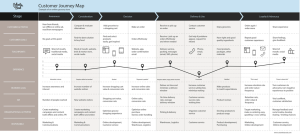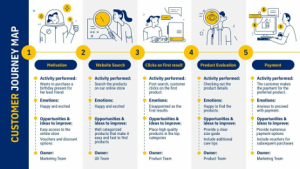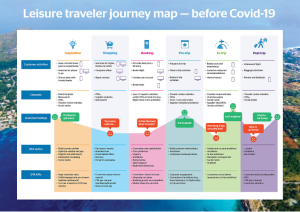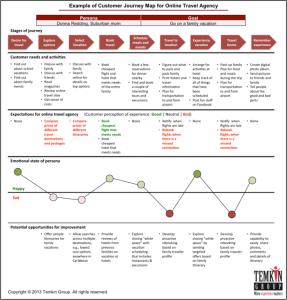14 The Customer’s Journey
Understanding the Customer’s Journey
The customer journey represents the complete experience a customer has with a service provider, from initial contact through engagement and into a long-term relationship. In the realm of service management, understanding this journey is pivotal for delivering exceptional customer experiences.
The concept of the customer journey has evolved significantly over the past decades. Initially, businesses focused primarily on individual touchpoints, such as the point of sale or customer service interactions. However, as competition intensified and customer expectations rose, service providers recognized the need for a more holistic approach. This shift led to the development of customer journey mapping, a powerful tool for visualizing and analyzing the entire customer experience.
Customer Journey Mapping
Customer journey mapping is the process of creating a visual representation of the customer’s experience with a service over time and across channels. This map typically includes various touchpoints, customer actions, emotions, and pain points throughout their interaction with the service.
The key components of a journey map often include:
- Customer personas
- Describe typical customers
- What are their key attributes?
- What do they need, what are the challenges they face?
- Timeline or stages of the journey
- Usually these fall into something like:
- Awareness of your service
- Consideration of purchasing
- Decision about purchasing (sometimes called “Conversion”)
- Delivery of Service and Use of Service
- Loyalty to the service
- Advocacy
- Usually these fall into something like:
- Touchpoints (how customers are interacting ) and channels (in-person, online, etc)
- Customer actions and decisions
- Customer thoughts and emotions
- Pain points and moments of delight
Creating a journey map involves several steps, including gathering customer data, identifying key touchpoints, and plotting the customer’s path through the service experience. For instance, a hotel might map a guest’s journey from booking a room online, through check-in, stay, and check-out, to post-stay follow-up.
The benefits of journey mapping are numerous. It helps organizations identify pain points in the customer experience, uncover opportunities for innovation, and align internal teams around the customer’s needs. For example, a telecommunications company used journey mapping to discover that customers were frustrated by long wait times when calling for technical support. This insight led to the implementation of a callback system, significantly improving customer satisfaction.
Emotional Journey Mapping
Emotional journey mapping focuses specifically on the feelings and attitudes of customers throughout their journey. This approach recognizes that emotions play a crucial role in shaping customer experiences and driving loyalty.
Techniques for capturing emotional data include:
- Surveys and feedback forms
- Facial recognition and sentiment analysis in physical locations
- Social media monitoring for emotional cues
When mapping emotional states, it’s important to consider both the intensity and the nature of the emotions at each stage. For example, a patient’s emotional journey through a hospital visit might range from anxiety before a procedure, to relief after successful treatment, to frustration during the billing process.
Designing for positive emotional peaks is a key strategy in emotional journey mapping. This involves identifying opportunities to create moments of delight or relief for customers. For instance, a software company might send a congratulatory message with a small virtual reward when a user completes their first project using the software.
Equally important is mitigating negative emotions. This could involve proactively addressing common pain points or providing extra support during potentially stressful parts of the journey. An example of this is how some airlines now send real-time updates and rebooking options to passengers’ phones when flights are delayed, reducing the stress and uncertainty of travel disruptions.
The peak-end rule is a crucial concept in emotional journey design. This psychological principle suggests that people judge an experience largely based on how they felt at its peak (whether positive or negative) and at its end, rather than on the sum or average of every moment of the experience. Service designers can leverage this by ensuring positive peaks and endings in the customer journey.
Balancing rational and emotional aspects of the journey is crucial. While emotions are important, customers also need clear information and efficient processes. A well-designed journey caters to both the heart and the mind of the customer.
Conclusion
Understanding and mapping the customer journey, particularly its emotional aspects, is a powerful approach in modern service management. By visualizing the complete customer experience, organizations can identify opportunities for improvement, innovation, and differentiation.
Examples of Customer Journey Maps


https://www.peoplemetrics.com/blog/customer-journey-map

https://piktochart.com/templates/presentations/2788-b2b-customer-journey-map/

https://www.travelport.com/wp-content/uploads/2021/01/leisure-traveler-journey-before-covid-1800.jpg

https://experiencematters.wordpress.com/2013/04/03/seven-steps-for-developing-customer-journey-maps/
Media Attributions
- 14-1
- Picture1
- 14-3
- 14-4
- 14-5
